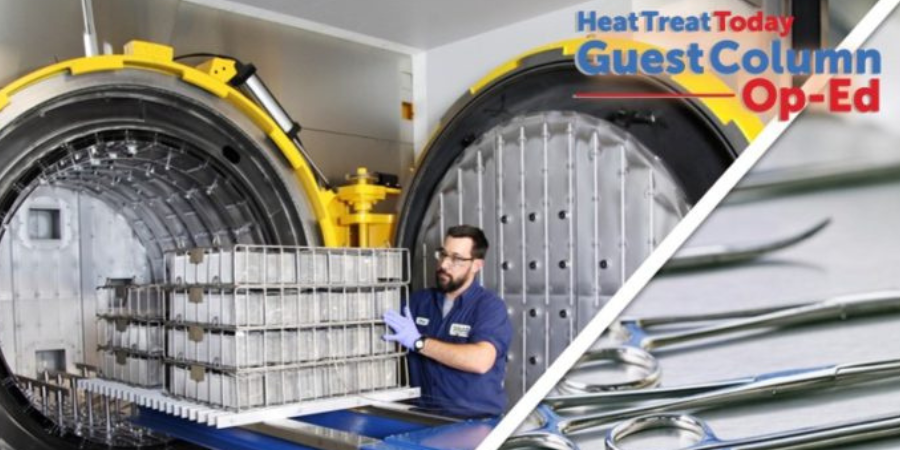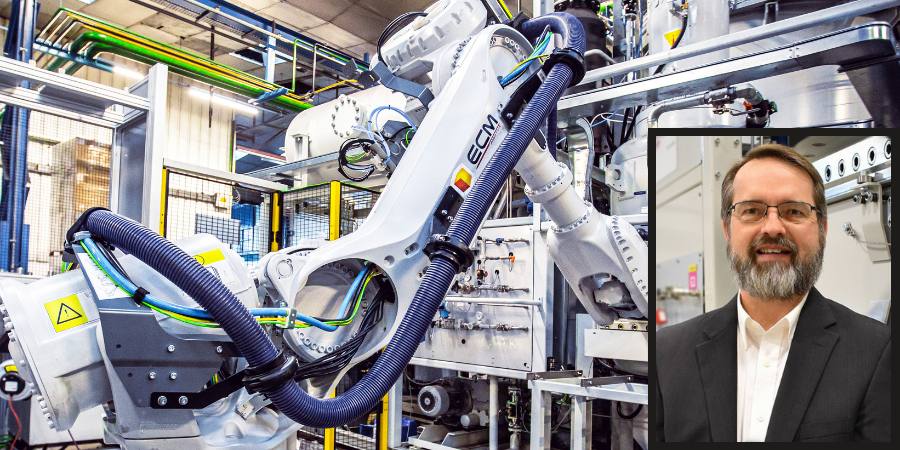![]() Medical devices, medical tools, and prosthetics all have a long history with heat treating. As we look to the future, the materials industry and the advancement of AM into the heat treat industry is moving at lightning speed.
Medical devices, medical tools, and prosthetics all have a long history with heat treating. As we look to the future, the materials industry and the advancement of AM into the heat treat industry is moving at lightning speed.
In this article by Trevor Jones, CEO, Solar Manufacturing Inc., see why vacuum furnaces are excellent choices for accurately providing the necessary process parameters for this incredible medical technology that can provide people with mobility, function and independence to improve their quality of life.
This original content column was originally published in Heat Treat Today's Medical and Energy magazine, December 2020.
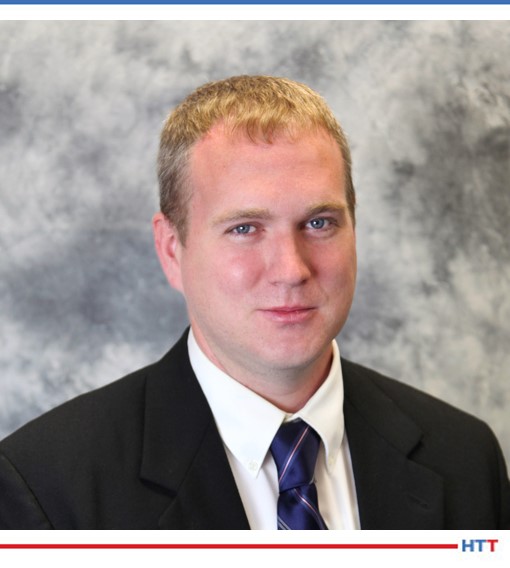
CEO
Solar Manufacturing, Inc.
Source: Solar Manufacturing, Inc.
Thermal processing of metallic alloys is the backbone of the heat treating industry. Speaking of backbones, the human spine, a critical part of the human body, can now be replaced with an additively manufactured and heat treated prosthetic metallic alloy spine. Medical devices, medical tools, and prosthetics all have a long history with heat treatment. As we look to the future, the materials industry and the advancement of AM into the heat treat industry is moving at lightning speed.
AM parts require precise heat treating especially, when it comes to atmosphere control, temperature uniformity, and flexibility. Vacuum furnaces are ideal for accurately providing each of these process parameters. Let’s take a look at each of these heating treat parameters a little more closely.
Atmosphere Control
Vacuum, by nature, is a neutral atmosphere which, in part, means it has no carburizing or decarburizing potential. Therefore, the surface of the parts that is directly exposed to the vacuum atmosphere cannot gain or lose the base carbon content of the alloy. Additionally, vacuum is practically void of oxygen. If the parts were exposed to oxygen at the elevated processing temperatures, the surface of the parts would become oxidized. In minor cases, a superficial oxidation layer would be the result. In more severe cases, the surface could experience alloy depletion and diffused oxygen.
This is particularly important when processing titanium alloys, which are inherently more sensitive to carbon, oxygen, and nitrogen. When titanium is exposed to any of these elements, a metallurgical phase called “alpha case” can develop on the surface of the titanium and diffuse inwards towards the core of the part.
In most applications, the alpha case is undesirable, and precautions should be taken to prevent it.
Vacuum processing can also provide an atmosphere where an elemental substance, like nitrogen, can be kept in balance with the parts being processed. For example, if an AM part intentionally contains nitrogen, processing this part in a deep vacuum may remove some of the nitrogen base content in the part. To prevent this from occurring, partial pressure nitrogen in the vacuum furnace keeps the nitrogen in equilibrium. The surface condition of these parts is extremely important especially if the AM parts will be implanted into the human body.
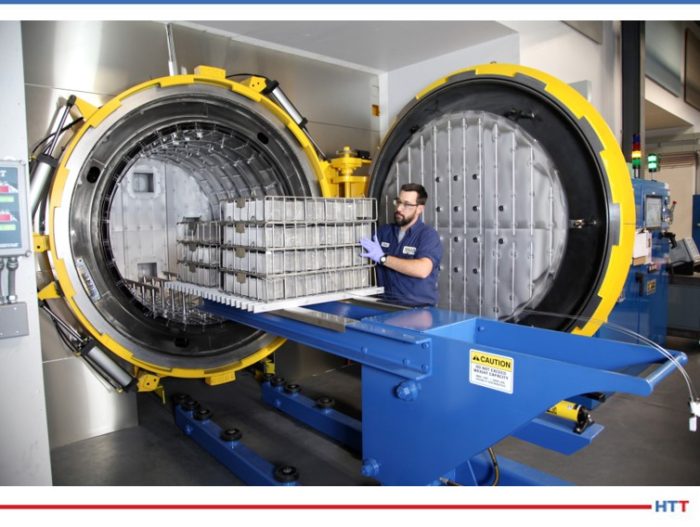
Source: Solar Manufacturing, Inc.
Temperature Control
The working zone of the furnace encompasses the parts being processed. It is critical that this entire working zone volume be thermally uniform to achieve predictable and consistent results. If any area of a working zone is cooler or hotter than the temperature of another area, it may negatively impact the heat treatment results including difference in mechanical properties and dimensional changes of the parts. For example, if the process is stress relieving and the parts were not subjected to high enough temperature for the requisite time, the parts may still contain some residual stresses.
Residual stresses can have various negative consequences during manufacturing, including cracking and part distortion – during build and finish machining. Tensile residual stresses in finished parts can also reduce fatigue and corrosion performance.1 A failure of a medical implant in the human body would be disastrous if it could have been avoided with proper heat treating!
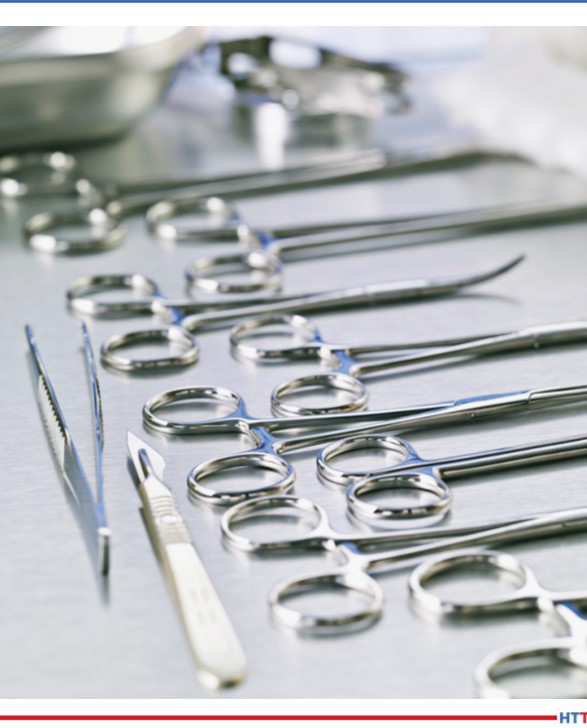
Source: ??
With proper design, vacuum furnaces can provide very tight temperature uniformity of ±5°F with direct part temperature monitoring throughout an entire working zone over a broad temperature range.
Flexibility
The vacuum furnace is extremely versatile in the infinite amount of process variables that are available to be adjusted, including heating rates, soaking temperatures, soaking times, atmospheric conditions, and cooling rates. All these variables can be adjusted to provide precisely what is required for a given alloy to optimize the heat treatment needs for the part being processed. To meet the need of the modulus and the strength and fatigue characteristics of a medical implant, AM technology can adjust the mechanical properties of the implant by changing some of the parameters in the processing.2
One of the many steps in the AM process is heat treating, and vacuum furnaces provide the flexibility that can be tailored to the alloy and heat treatment required. Having an AM prosthetic custom vacuum heat treated to fit the human body, could be the key to its success.
Vacuum furnaces and their unique heat treatment processes are ideal for providing the atmosphere control, temperature control, and flexibility that are essential for AM medical devices, tools, and prosthetics. As the AM market expands and the technology advances, vacuum furnace technology will continue to be integral in fostering that growth.
References:
- Adrian Dewald, “Residual Stress in Additive Manufacturing,” Hill Engineering Blog. https://hill-engineering.com/general-interest/residual-stress-additive-manufacturing/.
- LB, CG, XC, YS, JZ, LC, SZ, SQX, “Additive Manufacturing of Customized Metallic Orthopedic Implants: Materials, Structures, and Surface Modifications,” MDPI. https://www.mdpi.com/2075-4701/9/9/1004/htm.
About the Author:
Trevor Jones began his career as the project engineer at Solar Atmospheres commercial heat treating on their Research and Development Team, concentrating on the improvement of vacuum thermal processing equipment and the development of new processes. He is currently the CEO of the Solar Manufacturing, Inc., a division of the Solar Atmospheres Family of Companies.





